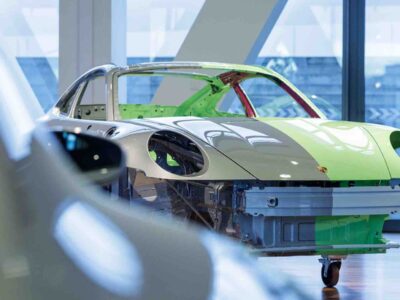Air travel is one of the areas where sustainability remains shrouded in mystery. Even with developments in aerospace technology, like electric engines replacing high-octane fuel, there are limitations. However, Swedish startup Heart Aerospace AB is moving toward a solution. Agreements with major airliners will soon test the viability of short-range domestic travel with electric airplanes.
Air Canada agreed to become a shareholder in Heart Aerospace as one of the first major airlines to use the startup’s ES-30 electric vertical takeoff to landing vehicles (eVTOL). It also has a sizable backing from Saab AB, a manufacturer of fighter jets.
These planes are designed to cut emissions for regional travel, with a cabin capacity of 30 passengers. There is also a 19-seater version called the ES-19. The eVTOLs are powered by a set of electric motors run on battery power. Not only are they much more efficient and eco-friendly, but they’re substantially quieter than fuel-powered ones.
Air Canada is a strategic partner for Heart Aerospace because the geography and topography of Canada resemble that of Scandinavia: rugged land that has challenging destinations to reach by jet planes. Turboprops, the category the ES-30 falls under, are necessary to arrive at more remote areas of the country.
The range on these planes is not very long, with only 124 miles achievable before the next charge — that’s at full capacity. More distance is possible if the eVTOLs go into hybrid mode, closer to 250 miles.
The caveat is that that would require aviation fuel to make up for the power the electric motor can’t hit. Either way, an electric plane that is efficient enough to link together remote settlements in provinces like Yukon and Saskatchewan is a game-changer.
Along with Saab, Air Canada pumped in $5 million in funding to purchase 30 ES-30 eVTOLs. “The introduction into our fleet of the ES-30 electric regional aircraft from Heart Aerospace will be a step forward to our goal of net-zero emissions by 2050,” said Michael Rosseau, Air Canada CEO, in a company statement.
The travel times are projected to be cut down sufficiently, with less need for refueling. Airlines can charge the eVTOLs close to full battery power in just 30 to 50 minutes. “With the ES-30, we can start cutting emissions from air travel well before the end of this decade,” said Anders Forslund, Heart CEO. And this innovation isn’t just being spread to Canada and Scandinavia.
While our Northern neighbors will see electric turboprops on the tarmac by 2028, U.S.-based airlines are following suit. United Airlines became the first North American airline to purchase from the Swedish aircraft maker with its order of ES-19s for its Mesa Airline division.
It’s the regional airliner under United’s umbrella. With 200 ES-19s expected to arrive in 2026, Heart Aerospace is positioning itself for a successful North American travel market breakthrough.
Other American airlines are investing heavily in electric aircraft for their fleets, although not all will be supplied by Heart Aerospace. These purchases will reduce emissions from planes, one of the biggest polluters due to fuel consumption and the noise and waste generated from flights.
Travel could also become cheaper with these new aircraft. As of September, Delta remains the only major U.S. airline not to buy into the electric shift.
With sustainable air travel becoming more readily available every year, developments in the range and speed of electric aircraft are critical to developing a reliable airline network. Short-range travel is just a baby step; next will be whether or not a plane can make a transoceanic flight without having to recharge at all. With the strides made by Heart Aerospace and other startups, electric air travel is on the horizon.





